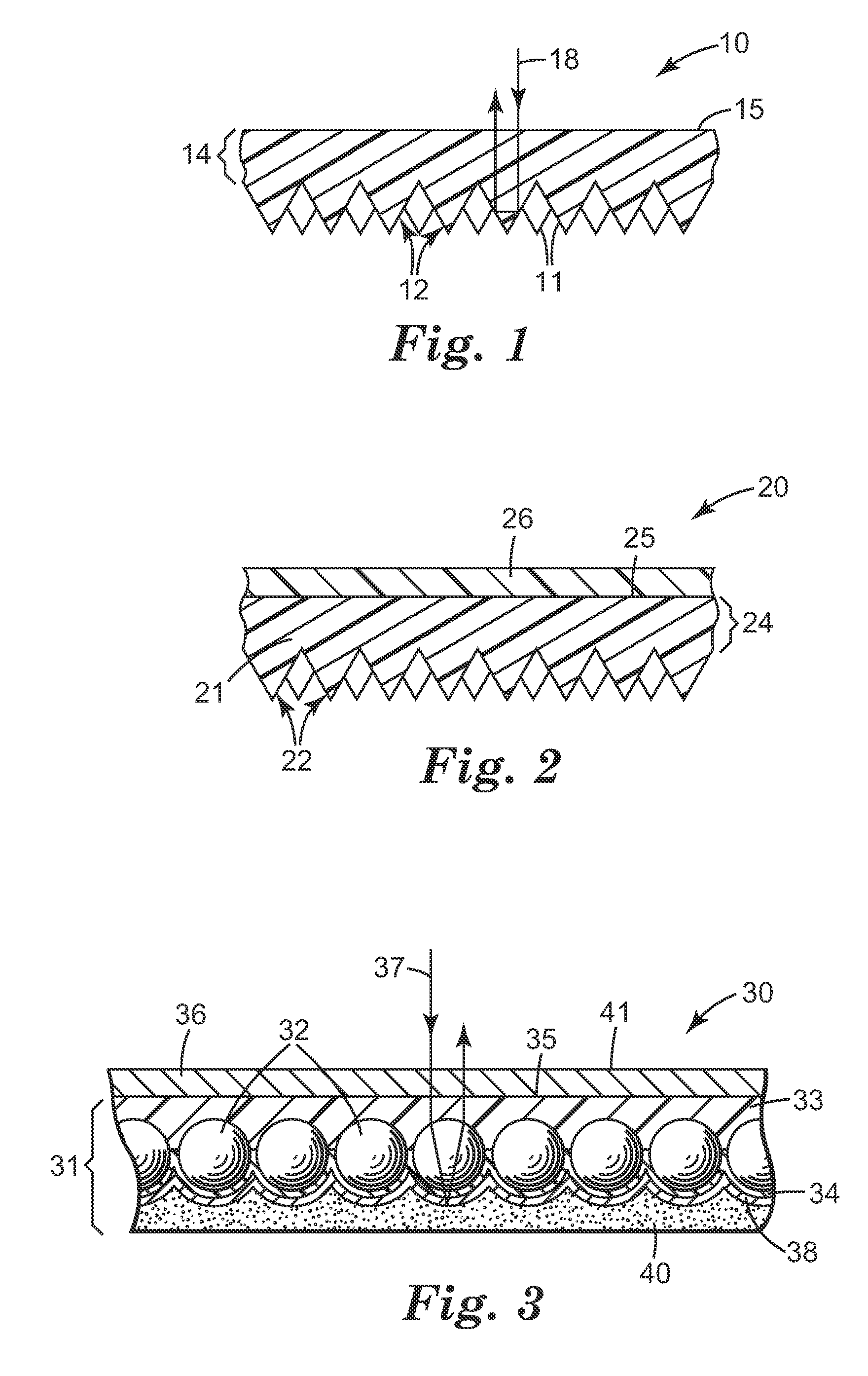Stabilization of fluorescent dyes in vinyl articles using hindered amine light stabilizers
a technology of amine light stabilizer and vinyl article, which is applied in the field of polyvinyl chloride articles, can solve the problems of affecting the stability of the polyvinyl chloride matrix, and the prediction of durable fluorescent-colored articles, and achieves the elimination of solvent use, reducing the manufacturing cost of the article, and eliminating solvent emissions into the atmosphere
- Summary
- Abstract
- Description
- Claims
- Application Information
AI Technical Summary
Benefits of technology
Problems solved by technology
Method used
Image
Examples
example 1
[0126] A polyvinyl chloride film having a thickness of about 0.089 mm (0.0035 inch) to about 0.11 mm (0.0045 inch) was made as follows. PVC resin (formulation S00354 containing UV absorbers from Alpha Chemical and Plastics Corp.) was mixed with about 0.2% SO63 fluorescent dye and about 0.5% of the T-770 HALS. The resin / dye / HALS mixture was tumbled.mixed. It was then extruded into a substantially flat film using a single screw extruder with 5 heating zones set at about 175, 205, 205, 175 and 175° C. and the film die set at about 180° C. The extruder was a three-quarters (¾) inch single screw Brabender extruder with polished chrome rolls.
[0127] The sample was subjected to 100 hours of weathering, and the data are reported in Tables 1 and 2.
[0128] Examples 2 and 3, and Comparative Examples A to B are all made according to Example 1 with different HALS used or no HALS used as described in Table 1. The samples were subjected to 100 hours of accelerated weathering, and the data are repo...
example 7
[0133] A polyvinyl chloride film was made using a pilot scale calendering process as follows. A powder of PVC was mixed with about 0.2% SY98 fluorescent dye and about 0.5% T-770 HALS. Other additives, for example UV absorbers, heat stabilizers, plasticizers, lubricants, and fillers were added either for processing aid or to help make a flexible PVC film. The mixture was fed through a strainer to remove metal, if present. The mixture was continuously mixed to form a fused mass, milled, and fed through rolls, all heated at about 177° C. (350° F.), to form the inventive film about 0.13 mm to about 0.15 mm (0.005 to 0.006 inch) thick. The sample was subjected to 400 hours of accelerated weathering and the data are reported in Table 3 below.
Comparative O
[0134] A calendered PVC film was made according to Example 7 except that no HALS was added to the PVC powder. The sample was subjected to 400 hours of accelerated weathering, and the data are reported in Table 3.
TABLE 3CALENDERED PVC...
PUM
| Property | Measurement | Unit |
|---|---|---|
| diameter | aaaaa | aaaaa |
| thickness | aaaaa | aaaaa |
| thickness | aaaaa | aaaaa |
Abstract
Description
Claims
Application Information
 Login to View More
Login to View More - R&D
- Intellectual Property
- Life Sciences
- Materials
- Tech Scout
- Unparalleled Data Quality
- Higher Quality Content
- 60% Fewer Hallucinations
Browse by: Latest US Patents, China's latest patents, Technical Efficacy Thesaurus, Application Domain, Technology Topic, Popular Technical Reports.
© 2025 PatSnap. All rights reserved.Legal|Privacy policy|Modern Slavery Act Transparency Statement|Sitemap|About US| Contact US: help@patsnap.com



